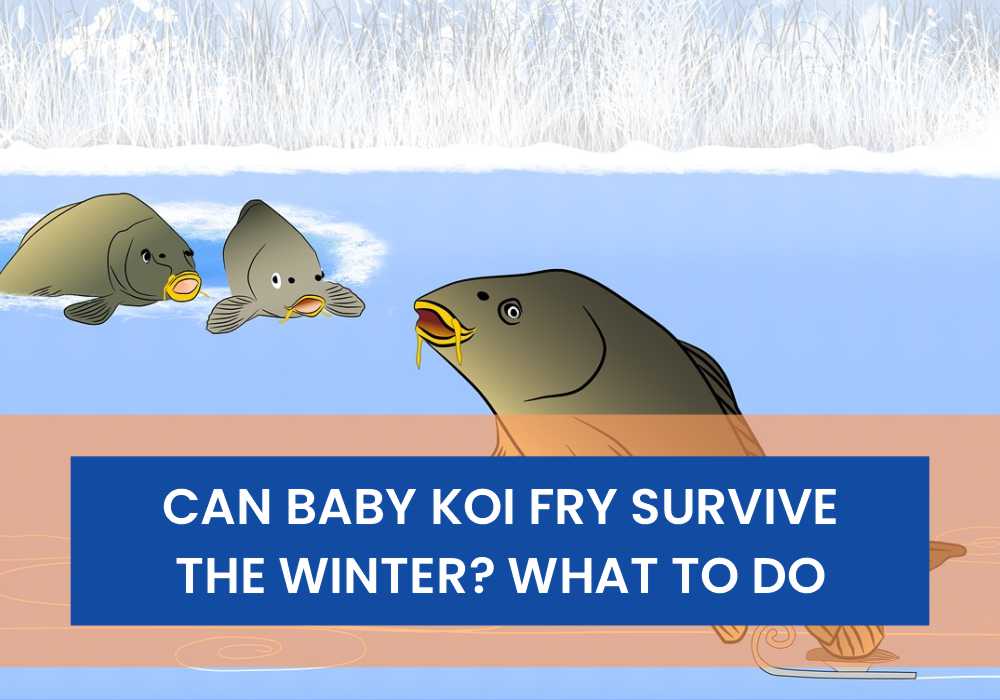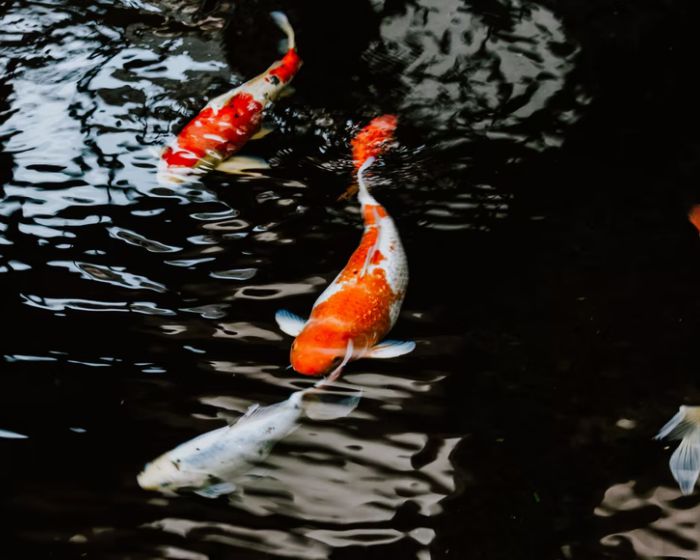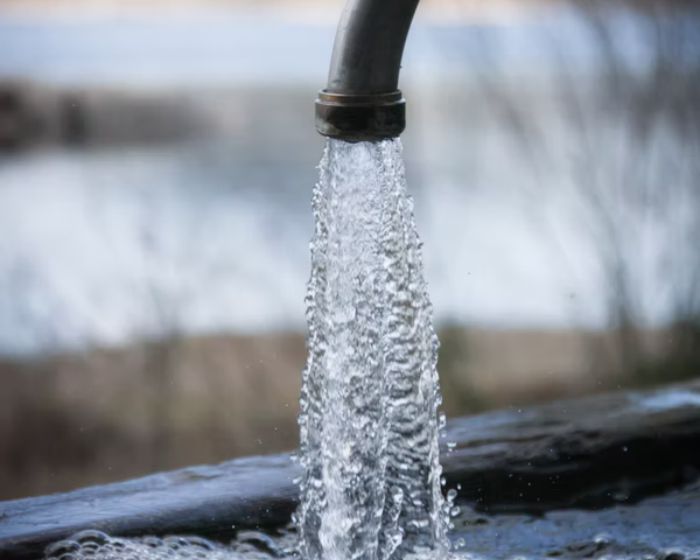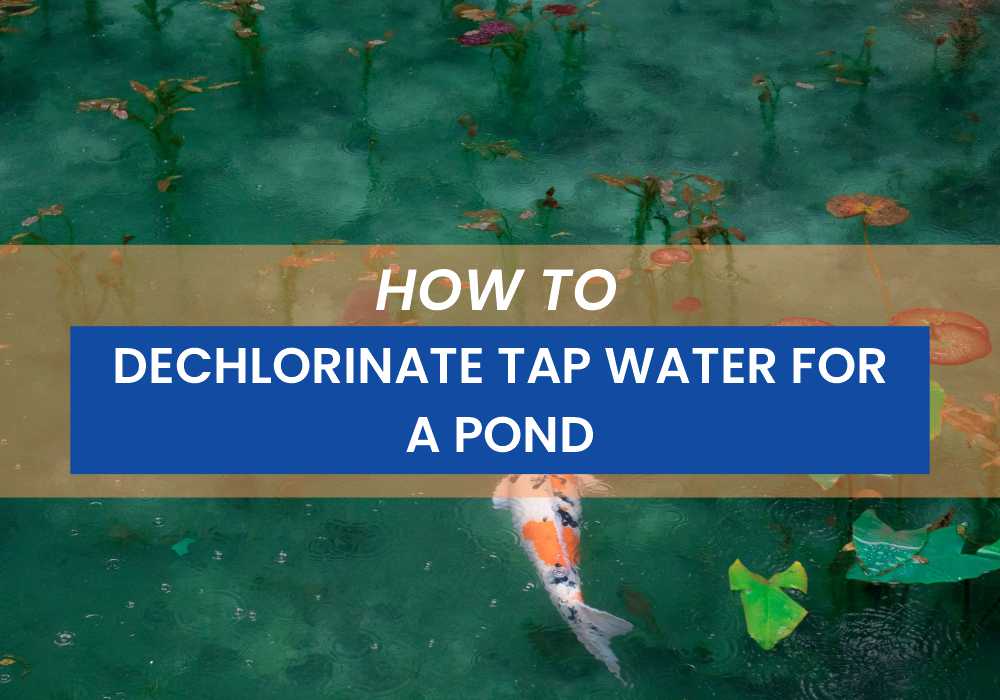As an Affiliate, We may earn a commission that doesn't cost you extra from qualifying purchases using links in this post. It helps keeps this blog running.
Koi fish are cold-blooded creatures which means their internal body temperature varies according to the surrounding water temperature. In order to survive the colder winter months, Koi has a few different adaptations.
One adaptation is that they can slow down their metabolism in order to conserve energy. Another adaptation is that some fish species will migrate to warmer waters during the winter months. And finally, some fish species will bury themselves in the mud at the bottom of a lake or pond in order to stay warm.
But what about their babies? How do baby koi fry survive cold winter months? Read on as we unveil what happens and how it happens.
Do Baby Koi Fry Freeze In The Winter?
Yes, some baby koi fry will freeze in the winter, but not all of them. It really depends on the water temperature and how big the fry is. If the water is too cold, they will start to slow down and eventually stop moving altogether. This can happen even if they are in a heated pond. If you think your fries might be freezing, you can try moving them to a warmer part of the pond or adding some salt to the water. Both of these things will raise the temperature slightly and might help the fry thaw out. Of course, if the fry is already dead, there is nothing you can do to bring them back.
Can Baby Koi Fry Survive Freezing?
Many koi enthusiasts are under the impression that their koi fry will not survive freezing temperatures. However, this is not necessarily true. While it is true that koi fry is very sensitive to cold water and can easily die from hypothermia, they can actually survive in freezing temperatures if they are acclimated properly.
In order to acclimate your koi fry to cold water, you will need to slowly lower the temperature of their tank over the course of several weeks. You can do this by adding ice cubes to their tank each day or by using a bubbler to aerate the water and lower the temperature. Once the temperature of their tank is around 50 degrees Fahrenheit, you can then move them into a pond or outdoor tank.
It is important to note that koi fries cannot survive in freezing temperatures if they are not acclimated properly. If you try to move them into a pond or outdoor tank without slowly lowering the temperature of their tank first, they will likely die from hypothermia.
If you live in an area where the winters are very cold, it is best to keep your koi fry indoors during the winter months. You can either keep them in their regular tank or move them into a smaller tank that is easier to heat. Once spring arrives, you can then start the acclimation process all over again so that they can be moved outdoors.
Can Baby Koi Fry Survive The Winter?
As temperatures start to drop, you may be wondering if your koi fry will survive the winter. The good news is that yes, koi fry can survive the winter! However, there are a few things you need to do to make sure they stay healthy and thrive.

How To Keep Baby Koi Fry Alive In The Winter (Koi Fry Winter Survival Tips).
1) A Heated Fish Tank or Aquarium
You’ll need to provide them with a warm place to live. An unheated pond is not ideal for koi fry, as they are sensitive to cold weather and can easily get sick. A heated fish tank or aquarium is a much better option. You’ll also need to make sure the water doesn’t freeze over, as this can kill your koi fry.
Fluval E300 Advanced Electronic Heater
The Fluval E300 is a powerful, submersible heater that is designed to keep your koi fry alive during the winter. It has an easy-to-use digital temperature controller that will let you set the perfect temperature for your fish. The heater also features a thermal safety cut-out system that will automatically shut off the heater if it becomes too hot. This keeps your fish safe and prevents overheating of your aquarium.
2) Proper Diet
You’ll need to feed them properly. Koi fry needs a high-protein diet to grow and thrive. They also need to eat small meals several times a day. It’s important to avoid overfeeding them, as this can cause health problems.
3) Regular Water Changes
You’ll need to change the water regularly. Koi fry is sensitive to ammonia and nitrites, so you’ll need to perform regular water changes to keep the levels low. This is especially important in winter when koi fry are less active and produce less waste.
4) Proper aeration
You’ll need to make sure the water is properly aerated. Koi fry needs oxygen to survive, and they can’t get it if the water is stagnant. An air pump can help with this.
HIBLOW HP-80 Pond Aerator
The recommended pond aerator is the HIBLOW HP-80 Pond Aerator with a low sound level. It also helps water circulation and aerates ponds up to 1/2 acre at 10′ or less in depth. At the same time, it is energy efficient and oil-free.
5) Good filtration
You’ll need to make sure the water is properly filtered. Koi fry is sensitive to water quality, so you’ll need to keep the levels low. A good filter will help with this.
All In One solution Aquagarden Pennington, Inpond, Pond & Water Pump, Filter, with UV Clarifier.
The recommended UV filter for Koi pond is the All In One solution Aquagarden Pennington, Inpond, Pond & Water Pump, Filter, with UV Clarifier. With a comprehensive range of three fountain heads, that provides an instant solution for a clear and healthy pond. This filter also comes with a built-in 5-watt UV clarifier light that helps kill green water and algae.
6) Quarantine new koi fry
You should quarantine the new koi fry. This will protect them from diseases and parasites. You can do this by keeping them in a separate tank or aquarium for a few weeks before adding them to your main pond.
By following these tips, you can make sure your baby koi fry survives the winter and thrive all year long!
What Temperature Should Baby Koi Fry Be Kept At?
The ideal temperature for keeping baby koi fry is between 77 and 86 degrees Fahrenheit. The water should be well-aerated and the fry should have plenty of hiding places. A good rule of thumb is to keep the number of fry at 10 per gallon of water.
How Do Baby Koi Fry Survive The Winter On Their Own?
The answer is simple: Koi fry don’t and can’t survive winter on their own which is why Koi fish don’t spawn during winter and instead spawn during May and June (Spring & Summer).
As the weather gets colder, many species of fish begin to experience a natural die-off. This is especially true for koi fries, which are very sensitive to changes in temperature and water quality. In fact, most koi breeders will not sell their fry until they are at least six months old and have been through one winter. This is because the chance of survival is so low for young koi fry during their first winter.
Koi fry cannot survive the winter without the help of an adult koi fish or a pond keeper. The cold water temperatures and poor water quality that occur during the winter months are too much for young koi fry to handle. They simply don’t have the immune system or the body size to withstand the conditions.
This is why it’s so important for koi breeders to sell their fry during the spring and summer months. The warmer water temperatures and better water quality make it much easier for young koi fry to survive.
If you’re thinking about buying koi fry, be sure to purchase them from a reputable breeder who only sells during the spring and summer months. This will give your fry the best chance of survival.

I’m Akin Bouchard. Even though I now own several different fish species, I first became a koi pond owner because I loved these creatures and wanted to turn my passion into something more serious. I take pride in my collection of koi fish and love sharing my knowledge with others interested in these beautiful creatures.







